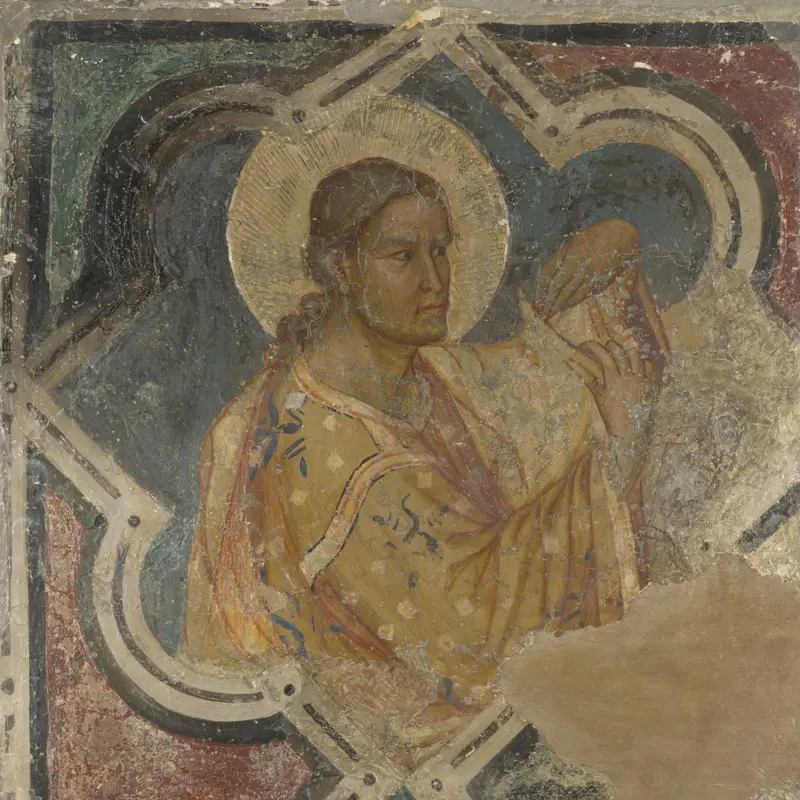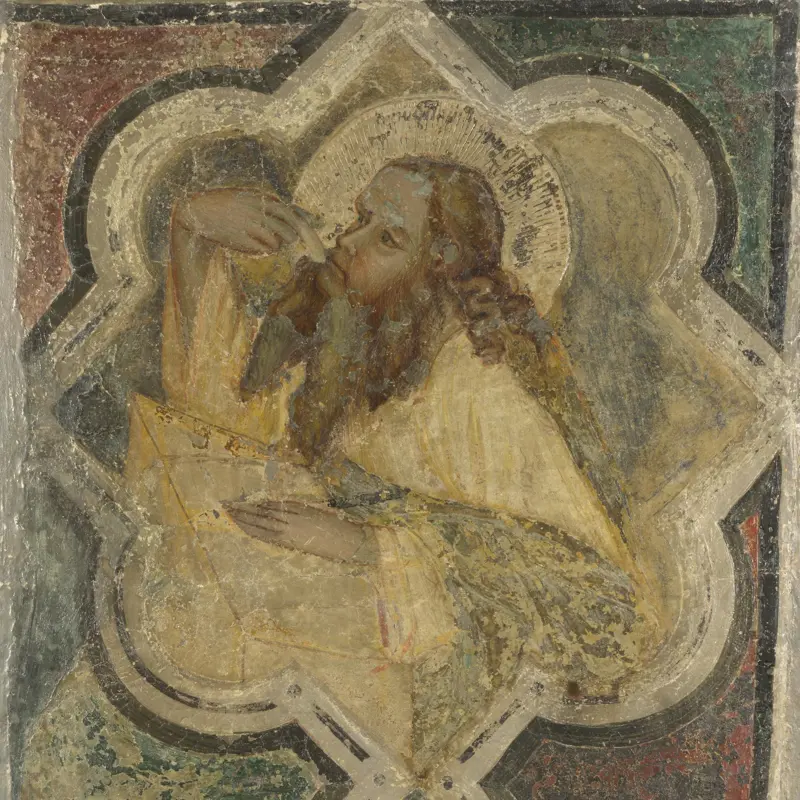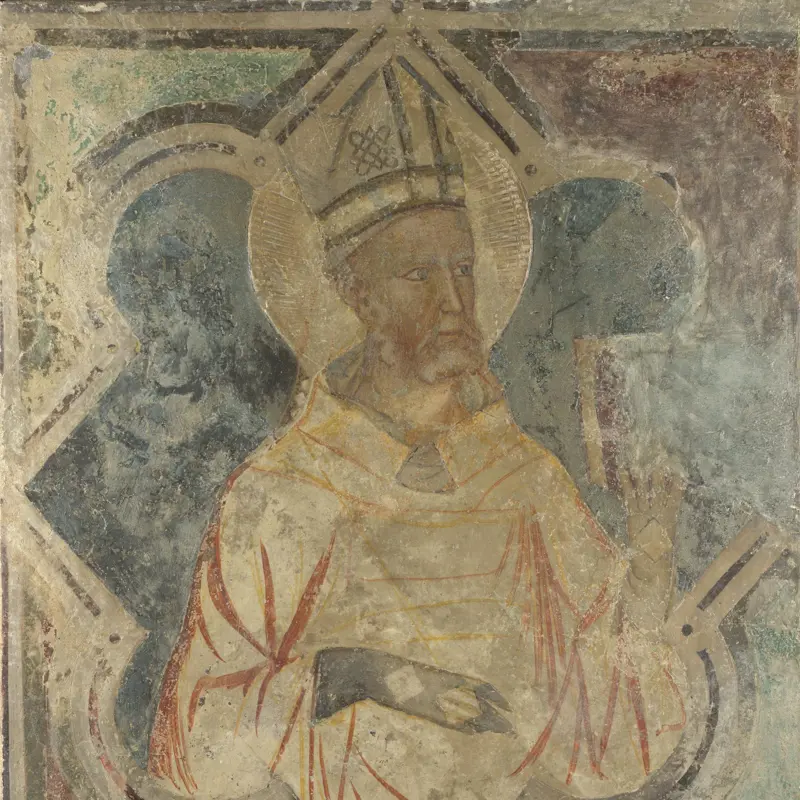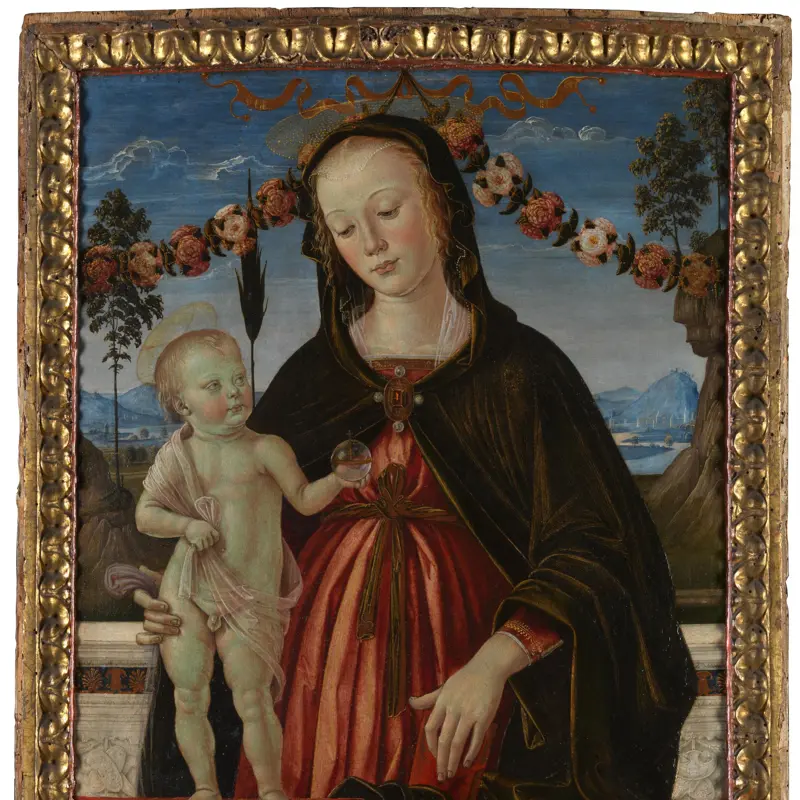Italian, Umbrian, possibly Master of San Crispino, 'An Evangelist', mid-14th century
About the work
Overview
An unidentified male saint in a quatrefoil medallion turns the pages of a book. We are not sure exactly who he is, but he was probably meant to be one of the four Evangelists, the authors of the Gospels. This is one of three fragments in the National Gallery’s collection which possibly came from the Palazzo del Podesta in Assisi. They were perhaps once part of the framing of some large composition.
They were probably painted in the first half of the fourteenth century and have recently been attributed to the so-called Master of San Crispino, who decorated the Oratorio di San Crispino at Assisi in the 1330s.
Key facts
Details
- Full title
- An Evangelist
- Artist
- Italian, Umbrian, possibly Master of San Crispino
- Artist dates
- Active mid-14th century
- Part of the series
- Fresco Fragments from the Palazzo Communale, Assisi
- Date made
- Mid-14th century
- Medium and support
- Fresco with areas of secco, transferred to canvas
- Dimensions
- 79.8 × 65.4 cm
- Acquisition credit
- Bought, 1926
- Inventory number
- NG4143
- Location
- Not on display
- Collection
- Main Collection
Provenance
Additional information
Text extracted from the ‘Provenance’ section of the catalogue entry in Dillian Gordon, ‘National Gallery Catalogues: The Italian Paintings before 1400’, London 2011; for further information, see the full catalogue entry.
Bibliography
-
1872M. Guardabassi, Indice-guida dei monumenti pagani e cristiani riguardanti l'istoria e l'arte esistenti nella provincia dell'Umbria, Perugia 1872
-
1923R. van Marle, The Development of the Italian Schools of Painting, 19 vols, The Hague 1923
-
1927C.J. Holmes, 'Three Early Italian Frescoes', in P.O. Kristeller (ed.), Festschrift für Max J. Friedländer zum 60. Geburtstag, Leipzig 1927, pp. 209-15
-
1929National Gallery, National Gallery, Trafalgar Square: Catalogue, 86th edn, London 1929
-
1930A. Nicholson, 'The Roman School at Assisi', Art Bulletin, XII, 1930, pp. 270-300
-
1936E. Zocca, Catalogo delle cose d'arte e di antichità d'Italia: Assisi, Rome 1936
-
1951Davies, Martin, National Gallery Catalogues: The Earlier Italian Schools, London 1951
-
1961M. Davies, The Earlier Italian Schools, 2nd edn, London 1961
-
1986Davies, Martin, National Gallery Catalogues: The Earlier Italian Schools, revised edn, London 1986
-
1988Gordon, Dillian, National Gallery Catalogues: The Early Italian Schools before 1400, revised edn, London 1988
-
1989F. Todini, La pittura umbra: Al Duecento al primo Cinquecento, Milan 1989
-
2001
C. Baker and T. Henry, The National Gallery: Complete Illustrated Catalogue, London 2001
-
2011Gordon, Dillian, National Gallery Catalogues: The Italian Paintings before 1400, London 2011
About this record
If you know more about this work or have spotted an error, please contact us. Please note that exhibition histories are listed from 2009 onwards. Bibliographies may not be complete; more comprehensive information is available in the National Gallery Library.
Images
About the series: Fresco Fragments from the Palazzo Communale, Assisi
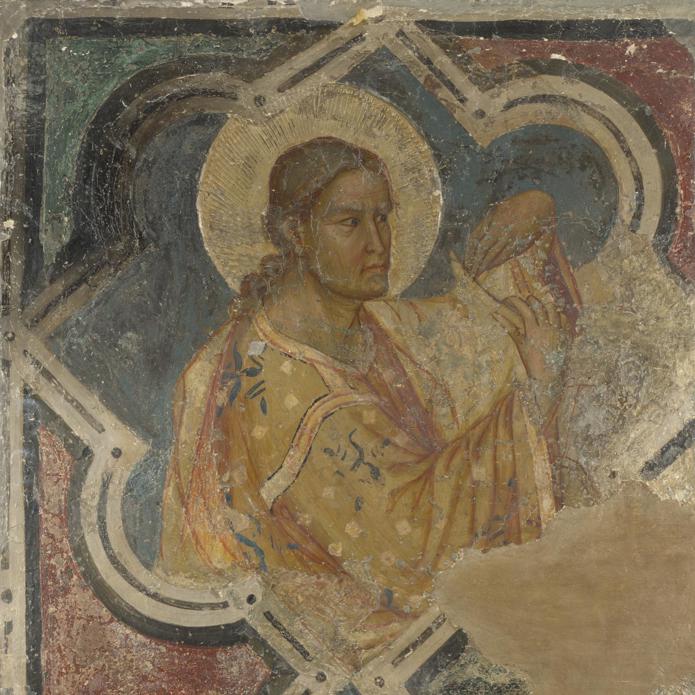
Overview
Unlike the vast majority of medieval and Renaissance paintings in our collection, these three fragments were not painted on panels or even linen supports. They are frescoes, which were painted directly onto a freshly plastered wall. They decorated the internal wall of a public building, the Palazzo del Podesta, Assisi, also more accurately known as the Palazzo del Capitano del Popolo, which was built between 1275 and 1288. The interiors of such buildings were often extensively decorated in the Middle Ages and these may well have formed part of the frame of some large composition.
They have recently been attributed to the so-called Master of San Crispino, who decorated the Oratorio di San Crispino at Assisi in the 1330s.

